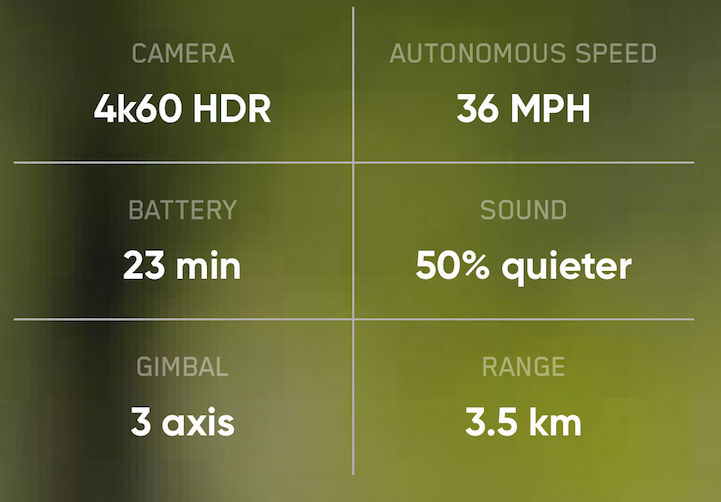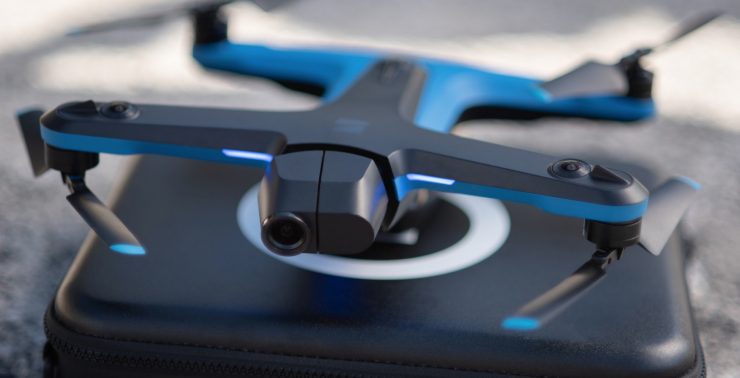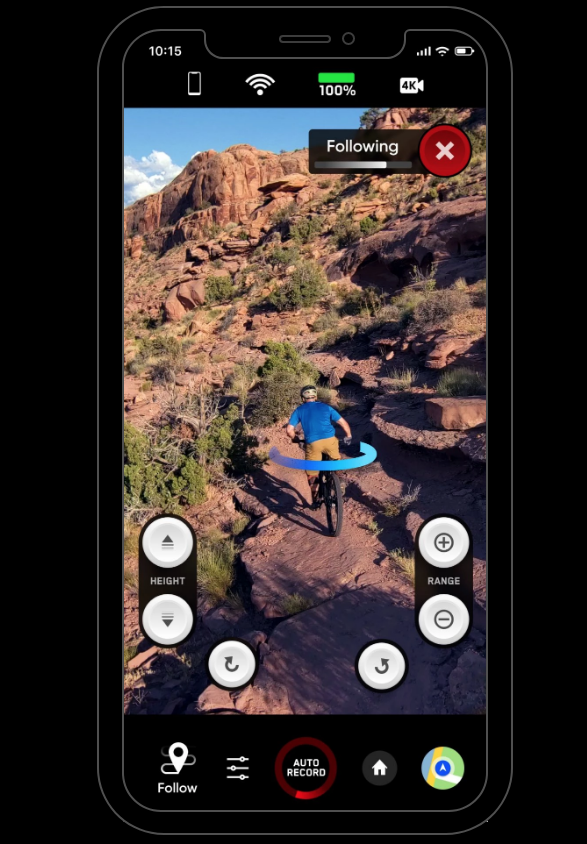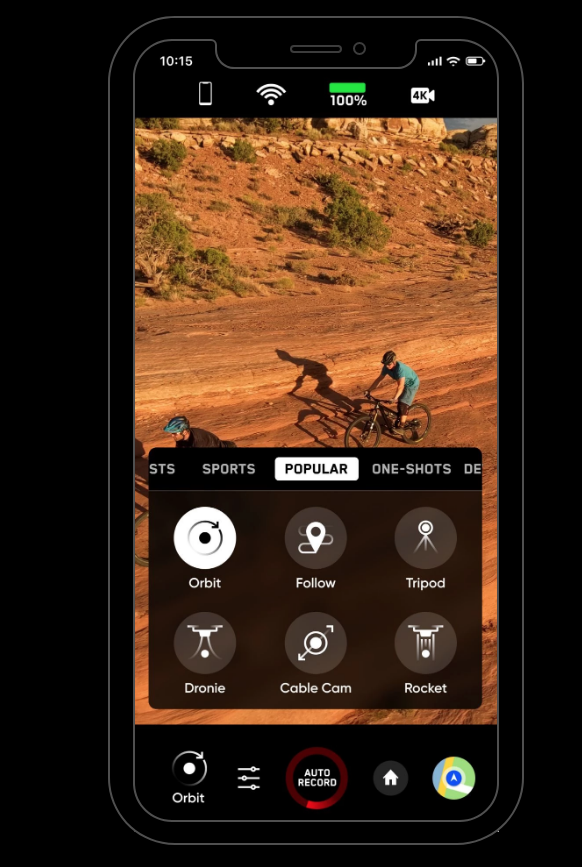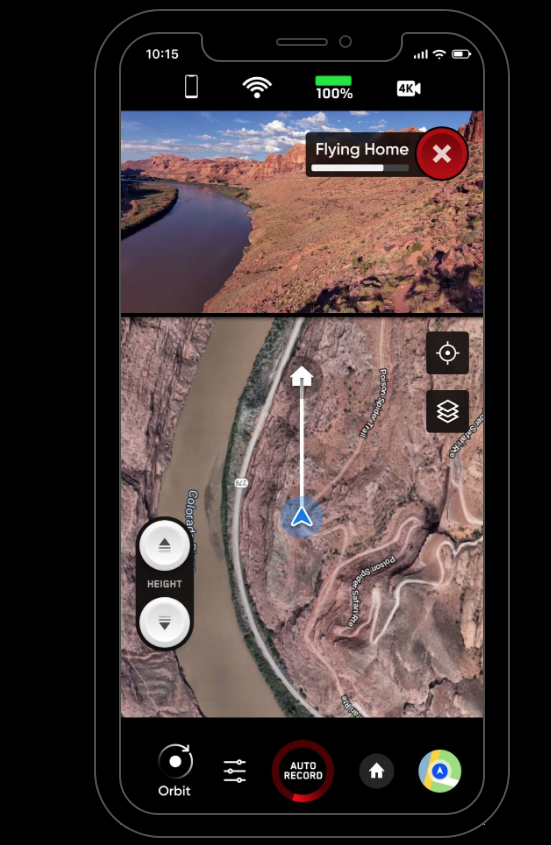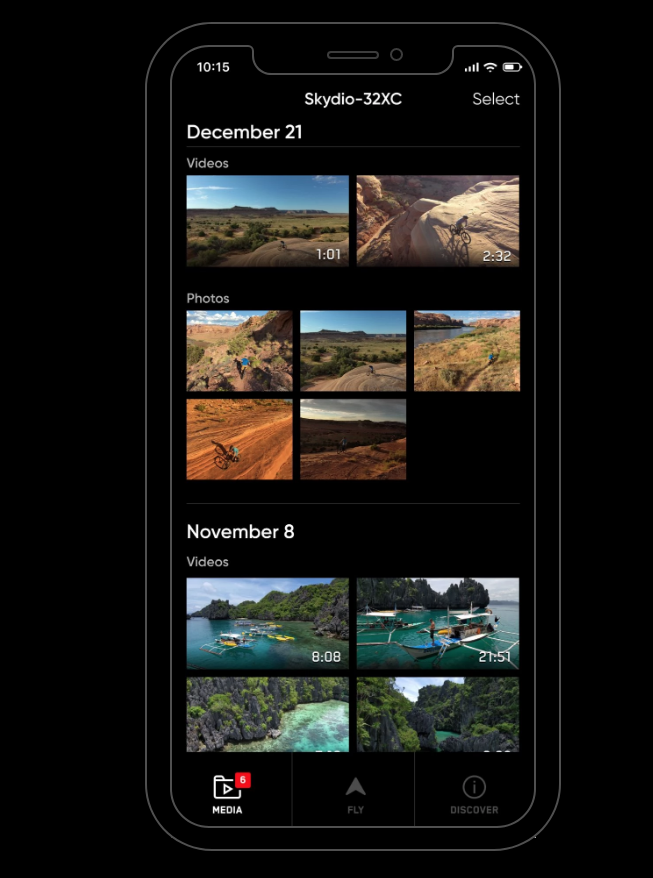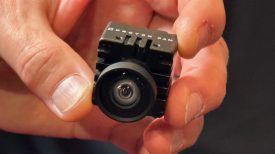The Skydio 2.0 is being marketed as an alternative to a DJI Mavic Pro 2. DJI has and continues to dominate the consumer and prosumer drone market. We have seen quite a few drone companies try and take them on with not much success. It will be interesting to see if the Skydio 2.0 gains any traction in the market.
Key features
In a nutshell, Skydio 2 was designed to:
- Fly itself while intelligently motion tracking a subject (currently, that subject can be a person doing any activity, or a car).
- Capture amazing, cinematic 4K video at up to 60FPS and 12-megapixel photos (120FPS slo-mo is also available at HD resolutions).
- Execute a variety of cinematic Skills to give you expert creative control of your videos.
- Be flown with the optional Controller accessory for precise manual control.
- Follow you from nearly a mile away, even when it can’t see you, with the optional Beacon accessory.
- Not run into stuff while doing all of the above.
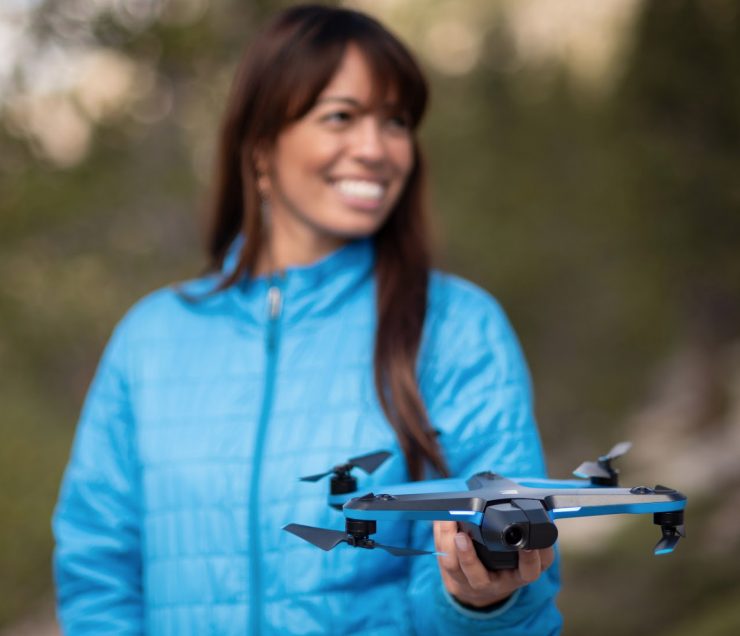
The drone weighs in at 775 g and has physical dimensions of 223 x 273 x 74 mm (l x w x h) with the battery attached.
Who is Skydio?
This is not Skydio’s first rodeo. They have made drones in the past, including the autonomous Skydio R1, which is no longer available.
The company’s founders met as grad students at MIT in 2009 where they pioneered autonomous drone technology. After MIT they helped start Google’s drone delivery program, Project Wing. Skydio was founded in 2014, and in 2018 they launched R1 which was widely regarded as a breakthrough in autonomous drones for consumers and as a platform for commercial development.
Skydio is an American company and they claim that the Skydio 2.0 is the easiest to fly, least likely to crash drone on the planet and we’re proud to be building it right here in America. Our customer support team sits in the same building with the engineering team that designed the product. We manufacture and repair Skydio 2 across the street. If you have any issue, we’re here to help. And we stand behind Skydio 2 with a simple promise: if you’re operating your Skydio 2 within our Safe Flight guidelines, and it crashes, we’ll repair or replace it for free. It’s that simple.
Camera
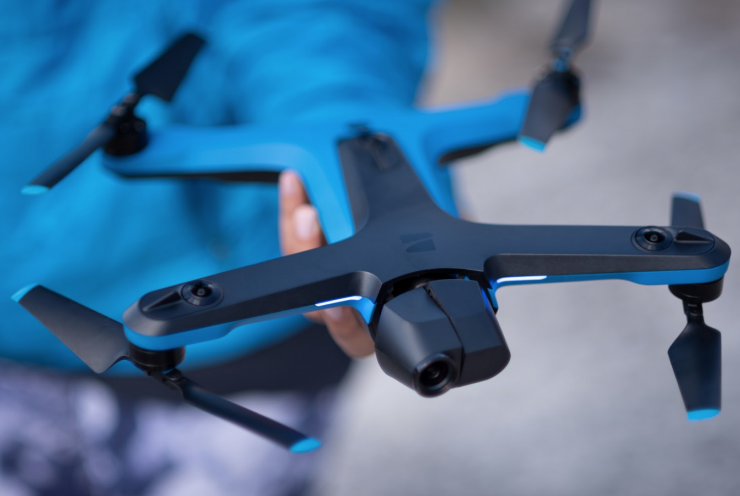
The Skydio 2.0’s camera is based around a Sony’s IMX577 1/2.3” 12.3MP CMOS sensor with a Qualcomm RedDragon QCS605.
It is capable of 4K video up to 60fps with HDR. It can also record HD at up to 120fps. Skydio 2 also features a dedicated photo mode for capturing 12MP HDR photos for a variety of shooting options, including single and interval.
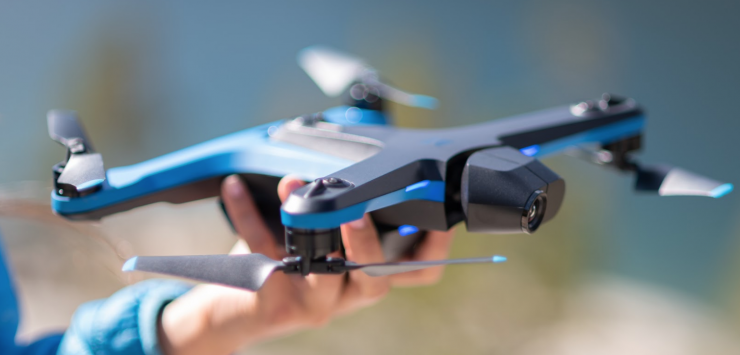
The Skydio 2.0’s camera uses a 20mm (35mm format equivalent) f/2.8 lens.
The recording bitrate is 100Mbps and you can record in MPEG-4 (AVC/H.264, HEVC/H.265). Strangely there doesn’t seem to be any 25p modes available.
The drone records to removable Micro SD Cards- UHS Speed Class 3 / V30.
VIDEO RESOLUTIONS, FRAME RATES & CODECS
- 3840×2160 30 fps
- 3840×2160 60 fps
- 3840×2160 48 fps
- 3840×2160 24 fps
- 1920×1080 120 fps
- 1920×1080 60 fps
- 1920×1080 30 fps
- BITRATE 100 Mbps
- VIDEO FORMAT: MPEG-4 (AVC/H.264, HEVC/H.265)
PHOTO RESOLUTION: Up to 4056×3040 (12 MP)
FORMATS: JPEG, DNG (RAW)
PHOTO MODES: Single, Interval
DYNAMIC RANGE: 13 stops
If you want to you can look at an independent report that was published by Nomicam that compares the image quality of :
Skydio 2 12MP
DJI Mavic 2 Zoom 12MP
DJI Mavic 2 Pro 20MP
DJI Mavic Air 12MP
The summary of this report is:
Skydio 2 and DJI Mavic2Pro are the best ones of the 4 tested drones, all IQ
KPI:s are at a good level. DJI Mavic2Pro has a bit of high noise in lab measurements but noise is not an issue in real field use. Also when using –EV in lab exposure in HDR the test chart is good.
DJI Mavic Air has good resolution and exposure, acceptable noise levels. but
colors and dynamic range are poor. In HDR content exposure is poor. When using –EV shift exposure is good. The device had AF issues in-field testing.
DJI Mavic2 Zoom has good exposure and resolution, acceptable colors and noise levels. but the dynamic range is poor.
Autonomy

The Skydio 2.0 looks to feature pretty impressive obstacle avoidance and autonomous capabilities. Above you can see a comparison against the DJI Mavic Pro 2.
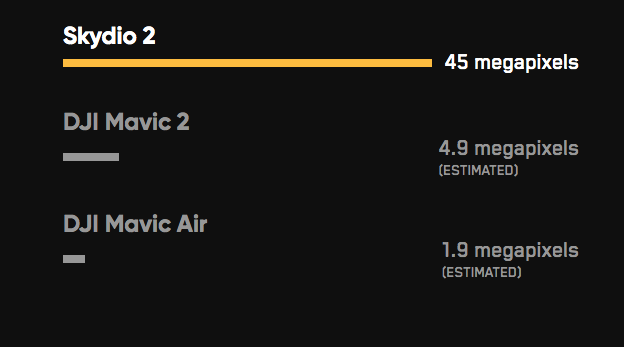
The drone uses six 4K navigation cameras. By utilizing 45 megapixels of visual sensing from six 200 degree color cameras, Skydio 2 can see everything in every direction. Skydio says that this is the foundation of trustworthy autonomous flight.

Skydio 2 has been designed around the idea of trustworthy autonomy, based on understanding its environment. Skydio 2 uses the Skydio Autonomy Engine, which has been the focus of years of research and development at Skydio.
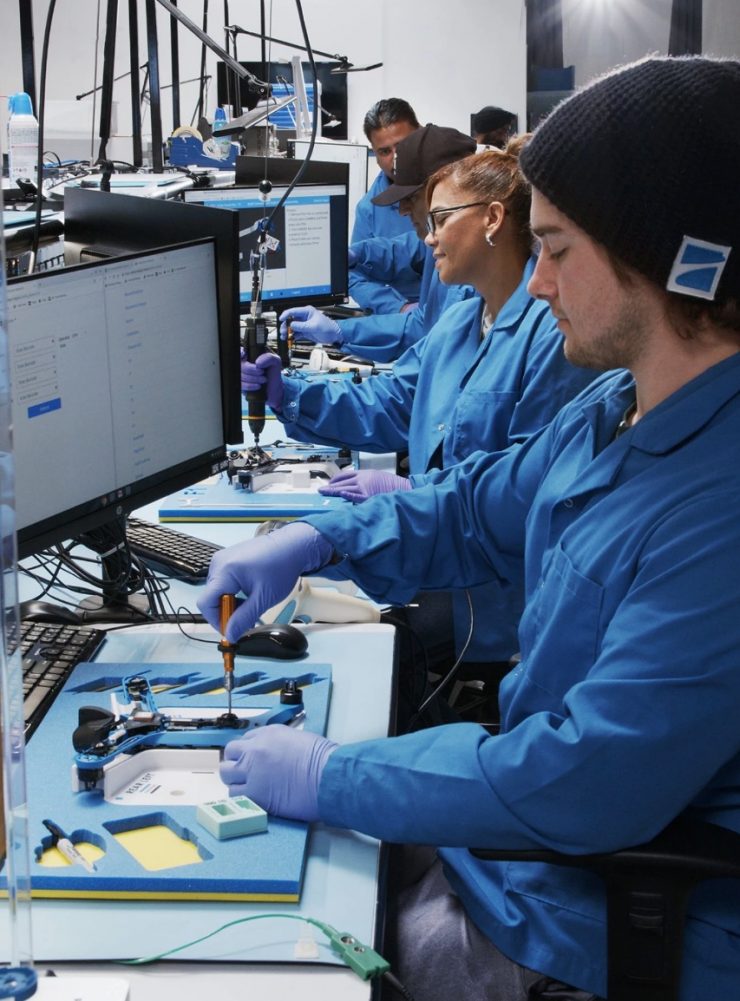
The Skydio Autonomy Engine comprehends what’s happening around Skydio 2, predicts what will happen next, and makes intelligent decisions multiple times a second. It uses six 4K cameras to build a 3D map of its surroundings that includes trees, people, buildings and more. By understanding what you’re doing, what obstacles to avoid, and what will happen next.
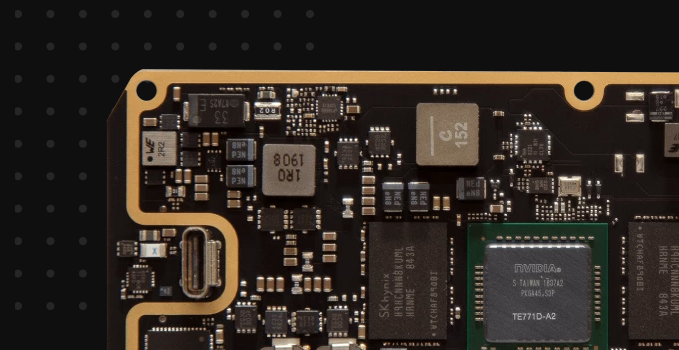
At the heart of Skydio 2 is the NVIDIA Jetson TX2, the fastest, most power-efficient embedded AI computing device available. With 256 GPU cores capable of 1.3 trillion operations a second, the company claims that the Skydio 2 is the flying supercomputer.
- MAIN PROCESSOR: NVIDIA Tegra X2 SOC
- GPU: 256-core NVIDIA Pascal™ GPU
- CPU: Dual-Core NVIDIA Denver 2 64-bit CPU Quad-Core ARM®-A57 MPCore
- RAM: 4GB 128-bit LPDDR4
- OBSTACLE AVOIDANCE COVERAGE: Omnidirectional and above/below Super fisheye lenses for 360° view
- 3D WORLD MODEL UPDATE RATE: 1 million points per second
- WORLD MODEL-TO-ACTION UPDATE RATE: 500 iterations per second
- ONBOARD AI: 9 custom deep networks used in flight
- USER-SELECTABLE SUBJECTS FOR TRACKING: People and motor vehicles
- OBJECT TRACKING AND IDENTIFICATION: Up to 10 simultaneous objects of interest
- CALIBRATION: Automated online calibration of lens
parameters, camera rotations, wind speed,
and air density - CINEMATIC SKILLS: Motion Track (relative to subject motion)
Fixed Track (relative to absolute orientation)
One Shots (dronie, rocket, boomerang, and vortex)
Cable cam (single pass, looping, or track)
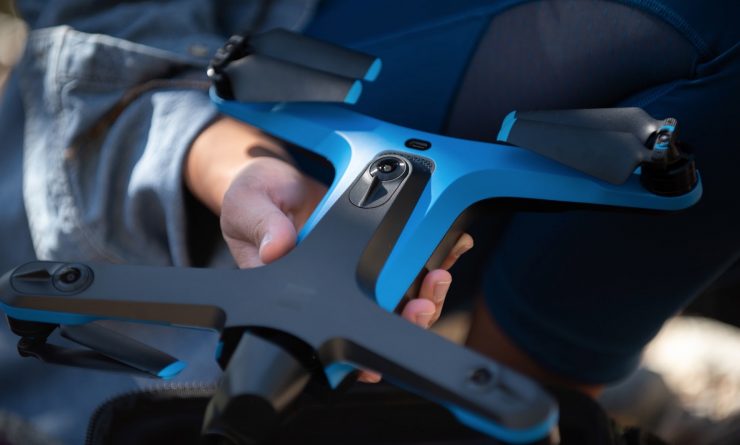
Three ways to control Skydio 2.0
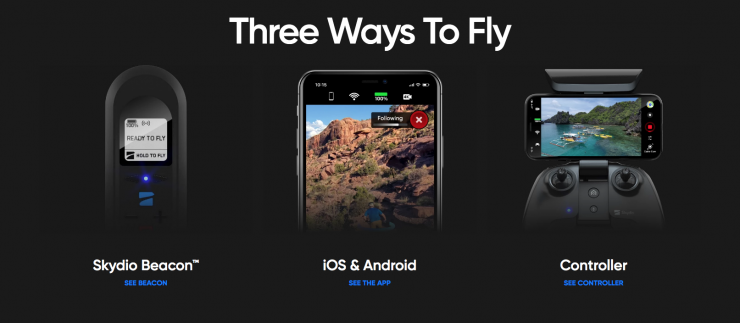
You can control the drone through a free iOS or Android app, or via the optional Skydio Beacon or Controller.
Launching Skydio 2 is as simple as tapping a button on your phone. As soon as it’s in the air, Skydio 2 begins avoiding obstacles on its own, even through challenging environments like a forested trail. At that point, Skydio 2 is flying itself – no need to fuss with complicated flight controls. When it’s following you, Skydio 2 uses its advanced vision system to track you through 3D space.
Controller

The Controller doesn’t even come as standard, you have to purchase it for $149 USD. The Controller also looks like the Parrot Anafi controller, and there is a reason for this. The company partnered with Parrot to create the Skydio Controller, and yes, it is the same hardware that comes with the Anafi.
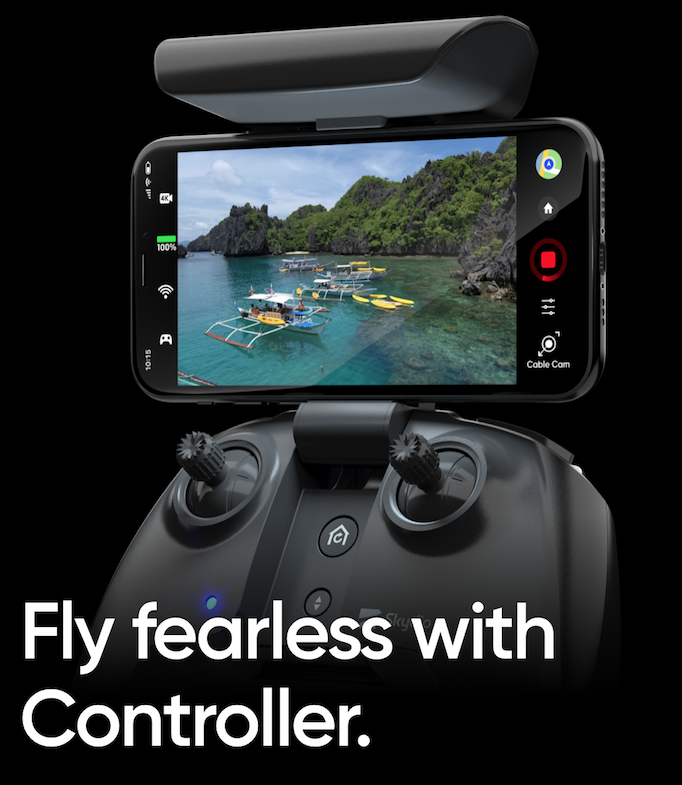
The only real difference is that the Controller is pre-loaded with Skydio software, and is set up to be used exclusively with Skydio 2.0. It won’t be compatible with the Anafi, nor will an Anafi controller be compatible with Skydio 2.
Skydio Beacon

You can buy the optional Skydio Beacon which extends the communication range up to 1.5 km. It uses GPS tracking so the Skydio 2.0 will stay with you, even if it can’t see you.
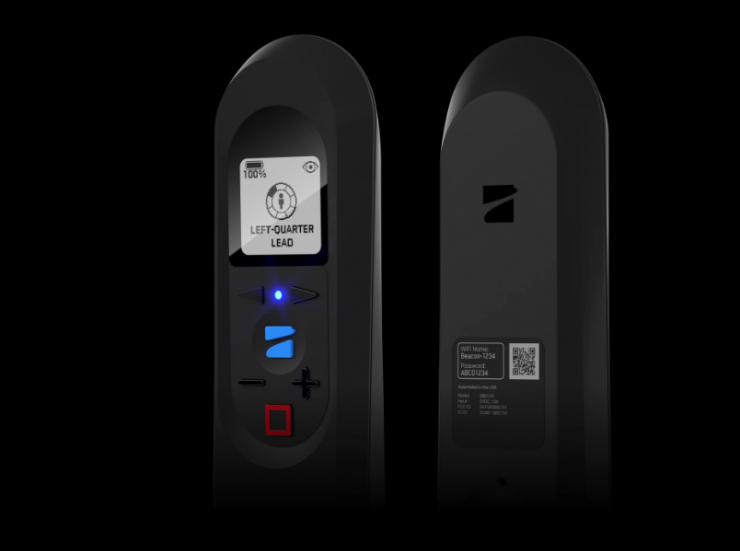
It has drag and drop controls that allow you to reposition Skydio 2 anywhere in the sky. It also gives you access to modes such as Dronie, Hover, and Angle Track.
Skydio Beacon can be used in conjunction with the Skydio app or as a separate, independent device. When used with the app, Skydio 2 will not be limited by your phone’s WiFi range and will be able to use Beacon’s strong GPS signal to track its subject. Once paired with your Skydio 2, Beacon will allow you to launch, land, and access shortcuts.
iOS & Android App
The drone can also be controlled via the free Skydio 2 app. Not only can you fly the drone manually, but you can choose flight modes such as Orbit, Dronie, and Cable Cam.
There are also integrated street and satellite maps for long-range missions and flight control. You can download photos and save video clips straight to your phone for instant sharing.
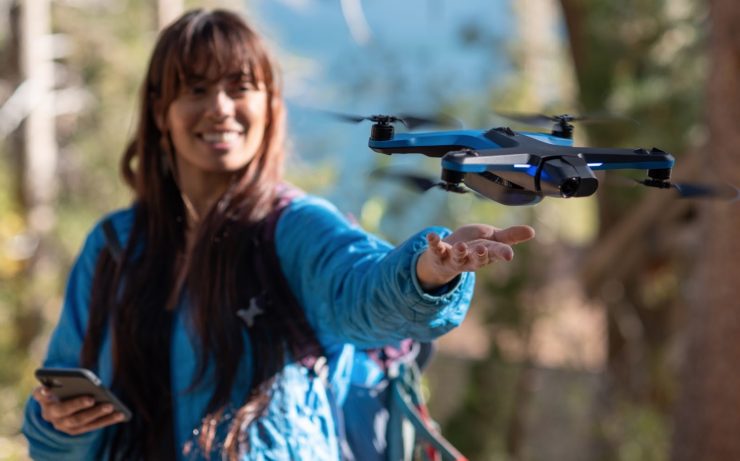
The Skydio 2 app uses your smartphone’s WiFi to communicate with your Skydio 2 and provide you with a live stream of the scene it’s currently capturing. Skydio 2 can also use your phone GPS signal to reacquire you for tracking or just return to you if needed.
What is the top speed?

The drone has a top speed of 36 mph (57.93 km/h) either in fully autonomous or manual control modes.
What is the flight time?

The flight time is claimed to be approximately 23 minutes on a single battery.
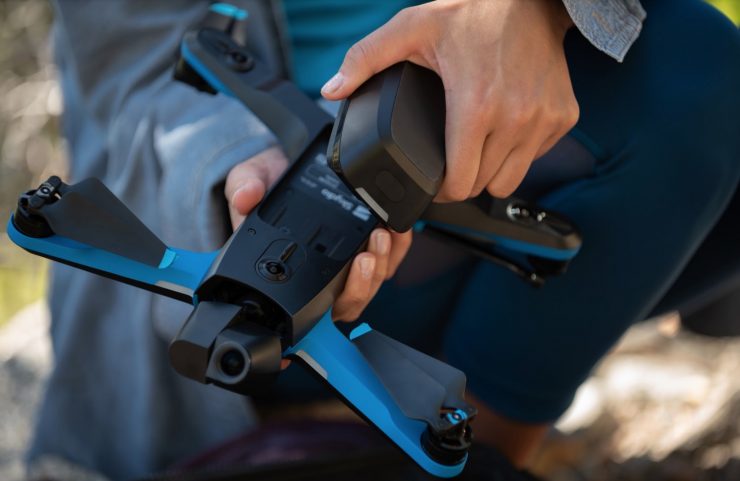
Can you attach an ND filter?
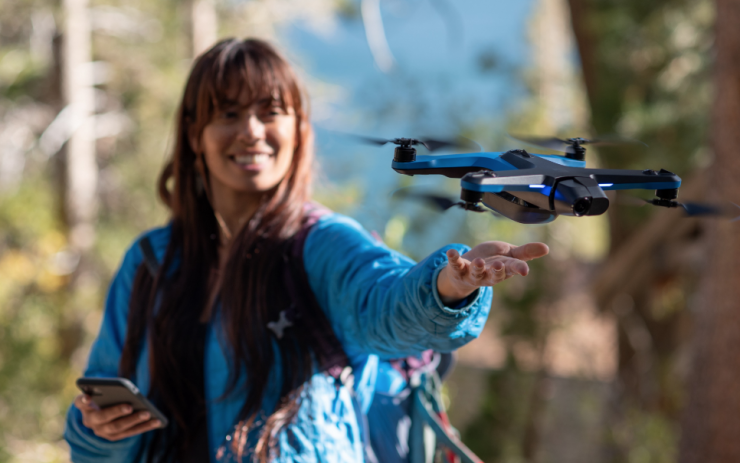
Yes, but not yet. The bezel of the main camera was designed to support ND filters. The company is currently working on a solution for this and I would expect if there is enough demand third party manufacturers will make filters for it.
What do you get?
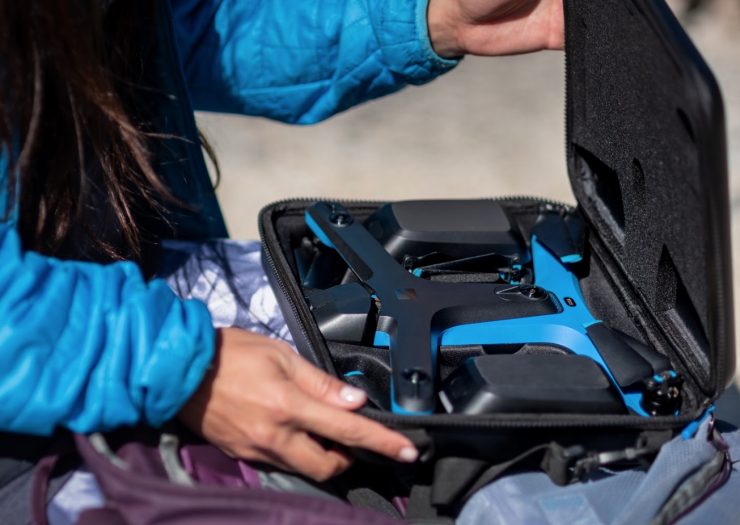
The Skydio 2.0 comes with:
- One battery
- Two additional propellers (one of each type beyond the four required to fly)
- One USB (type C) cable for charging and data transfer
- One USB (type C) wall adapter for charging
- Convenient, custom-fit, durable hardshell carrying case for transport.
Accessories
Here are the Skydio 2 accessories that will be available to purchase:
Controller $149 USD
Beacon $149 USD
Extra Skydio batteries $99 USD each
Extra Skydio propeller sets $24 USD each
Price & Availability
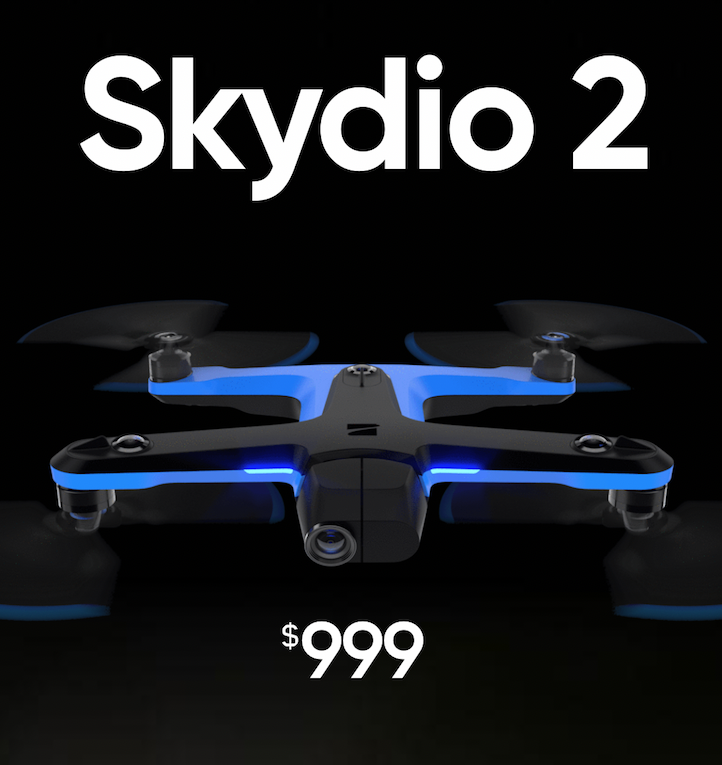
The Skydio 2.0 is expected to begin shipping in November in the order in which reservations were placed. The drone will cost $999 USD.
UPDATE: The first batch has already sold out, so if you order now you won’t receive your drone till early next year.
At this stage, the drone will only be sold and shipped to the US (excluding US territories) and Canada, but the company has plans to expand to other countries soon.
What do you think about the Skydio 2.0? Let us know in the comments section below.

